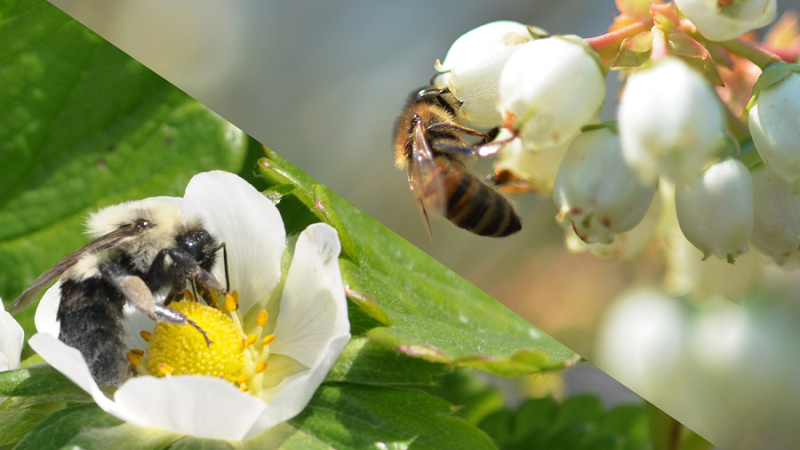Ways Produce Growers Can Avoid a Financial Squeeze in 2024
We’re coming up on the time of year when growers take stock of external conditions and start to make a plan to navigate what lies ahead. In 2024, growers can expect profitability to be influenced by several external pressures – like environmental conditions and the rising costs to do business, whether driven by labor challenges, disease pressures, the interest rate environment and/or pricing on nutrition and crop protection products.
Especially for those in the citrus market, growers are facing some critical decisions that will impact their success. What are the most cost-effective ways to combat citrus greening? Where can growers free up capital to invest in new technologies, which may hold the promise of new opportunities to bring trees affected by greening or hurricane-damaged groves back online? Enticed by sky-high prices for land in the current real estate market, some growers are even considering an exit from farming altogether.
Given all of these factors, it’s an important time for growers to take a step back and look at the big picture. There are exciting opportunities for specialty crop producers to capitalize and expand amidst these challenges and uncertainties. With an eye toward the future and a proactive planning approach, growers can put themselves in a stronger position for financial success.
Here are important tips to get ahead in 2024:
Do your research on the interest rate environment. It’s a good practice to review your lending options regularly. It’s critically important in the current market, where interest rates have risen steadily over the long term. There will always be a cost associated with borrowing, but growers can manage those expenses and get a better read on true spending by factoring in their total interest costs alongside total product costs. Growers who take advantage of promotional offers in conjunction with a traditional fixed rate financing offer can bring their total effective interest rate down to a level that, when consolidated, lands below Prime.
Growers who strategize and do a little extra research can open up significant cost-saving opportunities when it comes to interest payments. Take a hypothetical example of a produce grower who is financing their input purchases over a 10-month period. A financing package might include:
- Product Brand A at 1.9% APR
- Product Brand B at 3.9% APR
- Product Brand C at 4.25% APR
If this grower used their operating line of credit to pay for these products, they would end up paying significantly more in interest year-over-year as market rates range from 8.25% to 11.5% APR. The other option, which offers an advantage in terms of lower overall interest expense, would be for the grower to consider using a blended rate approach. In that scenario, the grower finances the purchase of all three products and brings their interest rate down to 2.79% APR.
Preserve cash with strategic use of financing. There are ample opportunities for growers across the ag industry to advance their operations with purposeful investments; however, many opt for cash-based transactions, effectively limiting the potential for advancement.
For citrus growers specifically, it’s a critical time to think about the most economical ways to leverage capital. Profitability equations are being challenged by increasing costs of labor and unforgiving burdens from disease pressures. One key benefit of utilizing financing programs for operational costs: increased financial flexibility to invest in the future.
We’re starting to see some exciting developments surrounding innovation in crop input technologies that will help growers respond to disease pressures from the last 10 years and rehab citrus groves that have historically low yields. With cash to invest in these new technologies, there’s a higher potential for citrus growers to bring diseased trees back online, which will increase yields and profits.
Growers who leverage financing as part of their capital management strategy give themselves a leg up when it comes to financial stability. Other effective strategies for growers to enhance profitability and enable growth include understanding cash flow needs and proactively managing their credit. Especially in the current market, finance charges and late fees will add up. Beneficial savings are available if you’re in the habit of meeting payment due dates on time and monitoring your credit report regularly.
Prepare for the future success of your operation. The real estate market in the Southeast U.S. is driving the price of land to historic highs. Farmers can fetch a massive premium on their land because of the demand for new development and green energy projects like solar farms. To ensure the future success of the ag industry in our region, everyone involved needs to embrace a forward-thinking approach. This includes:
- Investing in partnerships to support the financial viability of farmers in the region.
- Adopting new technologies to ward off current and future diseases.
- Evaluating crop and financial plans with a focus on maximizing the flexibility growers have to respond to uncertainties driven by the market and the weather.
- Educating the next generation of growers to flatten the learning curve so they can contribute to the long-term success of the industry as a whole.
Success in 2024 will challenge growers to manage growing conditions, market pressures and the everyday variety of obstacles that Mother Nature delivers without warning. Tight margins may have growers feeling squeezed, but with sound financial planning and strategy there are plenty of reasons to be optimistic.










